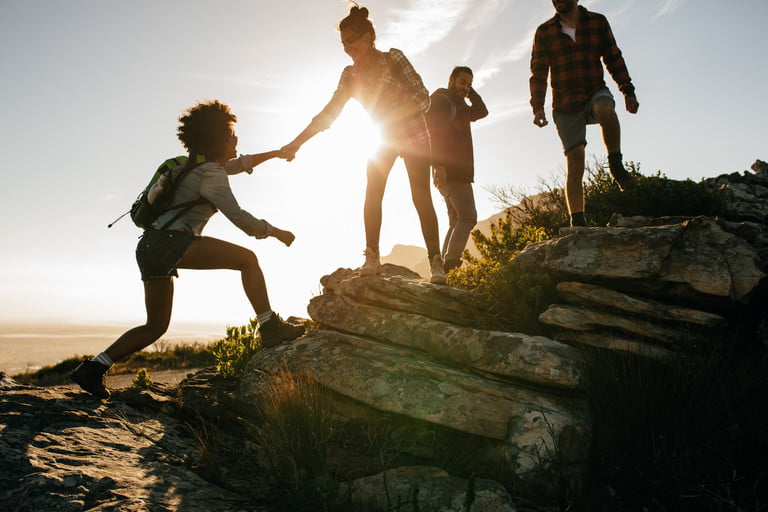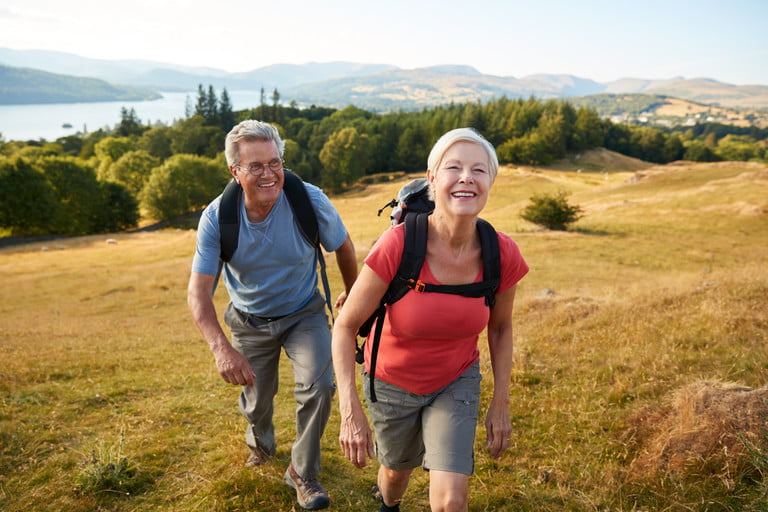If you are a lover of the outdoors and are interested in taking up hiking, you may be wondering how to go about starting that adventure. And while hiking is an amazing way to connect with nature and build your body’s overall strength and physique, it isn’t a hobby you start off with lightly. Hiking in the great outdoors can be thrilling, but it’s important to remember that nature must be respected — that’s hiking 101.
The question of how many miles should a beginner hike is really a broad one and should be answered in a series of questions and answers. Upon each answer, another layer of information is built until we finally answer it. Much like many things in life, this question is a lot more than just a surface one and must be considered when deciding upon the final answer.

Brushing up on your skills
Hiking is an exhilarating way to stretch your legs and give your whole body a deep and thorough workout. Not only is hiking an excellent cardio routine, but it also gives your precious lungs some exercise as well. Whether you’re
The question of how long a beginner hiker should hike for is truly a series of questions, all building upon the previous one until a final answer is settled on. Before we can answer the initial question, we first must answer the following:
How old is the person who’d like to start hiking?
As much as we’d like to say otherwise, age often plays a factor in the length and time at which a person of a certain age could usually hike for, even at their top physical fitness.

What is their overall physical condition?
Again, this is a question that feels a little condescending, however that is not its meaning whatsoever. The over physical condition will help answer the end-result question while playing into the previous and next question as well.
Does the person who’d like to begin hiking have any outdoor experience?
This question gets a bit more personal and asks a question that may be a bit deeper. Have you spent time in any sort of wilderness preparedness groups, such as the scouts or camping? Are you familiar with how to start a fire, make a lean-to for shelter, or locate fresh water?
North, south, east, or west?
Once you have answered those questions, the next step is to decide on where you’d like to make your maiden voyage. Knowing the terrain of the location you’d like to hike is another key piece of the puzzle. With this information, you’ll be able to look further into that location, starting with the trails.
Most state parks, county-run trails, or other maintained foot-traffic spots will have a map laid out featuring trails for different types of travelers. These maps will be based on the terrain, topography, and skill level of those who choose to travel. Locating hard and digital copies of the map are important pieces of equipment to keep in your pack when planning your trip.
A few other extremely important gadgets and equipment to save room in your bag for are:
- Life straws: Specially-made filtration straws that allow users to drink water, even dirty water while filtering it for safe consumption.
- GPS: Having a digital location device is important.
- Lighter: Always having a light or flame source on hand allows users the opportunity to start a fire if needed to keep warm, prepare food, or scare away larger animals.
- Extra food rations: Even if it’s just a few granola bars or packs of crackers, pack them. It won’t seem like too much when and if you need it.
- Light or torch: This could be as simple as a headlamp or a flashlight. The point is, you don’t want to be caught without some time of illumination — trust us! There’s not much worse than not being able to see in the dark.
Walk it off
If you’ve come this far, that means that you’ve answered all the previous questions, you know your age (or at least we hope so!), are comfortable with your knowledge, have measured and weighed physical condition (in more ways than one), and have packed all the necessary items we’ve discussed. You may be saying to yourself, “I’ve bought all this stuff, I’ve answered all these questions, I’ve planned all these situations out, complete with clear and distinct paths that I will cross. What else could you possibly need to begin hiking?”
The answer? The energy to get going!



